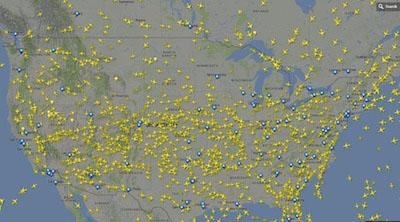Calling For Changes In Training And Procedures For The Entire Aviation Community
Citing how important weather reports by pilots are to flight safety, the NTSB, in a special investigation report, is calling for changes in training and procedures for pilots, air traffic controllers and others within the aviation community to enhance the effectiveness of the entire pilot weather reporting system with the intent to reduce pilots’ inadvertent encounters with hazardous weather and to prevent weather-related accidents.

Pilot weather reports, or PIREPs, are brief reports from pilots of observed in-flight weather conditions. Pilots, flight dispatchers and air traffic controllers use the information gleaned from these reports to help all pilots avoid weather hazards, including those that may not otherwise be known from weather radar and other detection systems and forecasts alone. Meteorologists also use PIREPs to validate or amend forecasts, enhancing the accuracy of the weather information made available to the aviation community.
“Even with the many advances that have been made in weather modeling and forecasting in recent years, there’s still nothing that can replicate the value of pilots’ reports of the weather conditions they encounter,” said NTSB Acting Chairman Robert L. Sumwalt. "As a longtime general aviation and air carrier pilot, I can’t overemphasize the importance of PIREPs. They provide pilots of all types of aircraft with critical real-time information that can enhance safety for everyone in the skies.”
In developing the report, Improving Pilot Weather Report (PIREP) Submission and Dissemination to Benefit Safety in the National Airspace System (NAS), staff investigated numerous aviation accidents in which weather was a factor and held a two-day forum on PIREPs in June 2016, which all revealed deficiencies in how PIREPs were reported, collected, disseminated and used.
Investigators uncovered a number of reasons why the pilot community makes relatively few PIREPs, as shown in the graphics above. These include insufficient emphasis during pilot training on the importance that PIREPs – including those reporting “as forecast” or favorable conditions – can play in flight safety, a lack of standard criteria for reporting certain weather phenomenon, and even concerns by pilots that they could be targeted for enforcement action if they report about adverse weather conditions they were or are in for which they or their aircraft are not rated or qualified.

The report details numerous factors that contribute to the challenges that air traffic controllers face in soliciting, collecting, handling and disseminating PIREPs, including inadequate and conflicting guidance, a lack of best practices for all types of air traffic control facilities, insufficient automation capabilities and a lack of scenario-based training.
Investigators also noted that air cargo operators, which do the majority of their flying overnight, could significantly aid weather forecasters by increasing the frequency and number of PIREPs submitted on a daily basis.
To address the issues in this special investigation report, the NTSB issued safety recommendations to the Federal Aviation Administration, the National Weather Service, the National Air Traffic Controllers Association, the Aircraft Owners and Pilots Association Air Safety Institute, the Aviation Accreditation Board International, the National Association of Flight Instructors, the Society of Aviation and Flight Educators, and the Cargo Airline Association.
(Images provided with NTSB news release. The image at the top, excerpted from flightradar24 website, shows the approximate volume of air traffic (derived from certain transponder, radar, and other data) captured in an instant in June 2016. The image below it, excerpted from the Aviation Weather Center’s website, shows graphical depictions of about two dozen PIREPs submitted during a one-hour period on the same day)
 Unfortunate... ANN/SportPlane Resource Guide Adds To Cautionary Advisories
Unfortunate... ANN/SportPlane Resource Guide Adds To Cautionary Advisories ANN FAQ: Turn On Post Notifications
ANN FAQ: Turn On Post Notifications ANN's Daily Aero-Term (04.29.24): Visual Approach Slope Indicator (VASI)
ANN's Daily Aero-Term (04.29.24): Visual Approach Slope Indicator (VASI) ANN's Daily Aero-Term (04.28.24): Airport Marking Aids
ANN's Daily Aero-Term (04.28.24): Airport Marking Aids ANN's Daily Aero-Linx (04.28.24)
ANN's Daily Aero-Linx (04.28.24)




